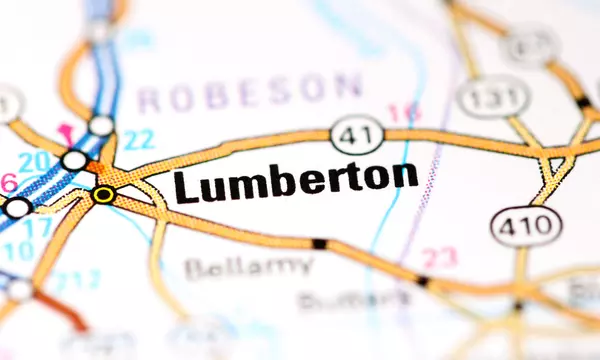
Community resilience is the ability to prepare for anticipated hazards, adapt to changing conditions, and withstand and recover rapidly from disruptions. Activities, such as disaster preparedness—which includes prevention, protection, mitigation, response and recovery—are key steps to resilience.
NIST manages a multi-faceted program, assisting communities and stakeholders on issues related to buildings and the interdependencies of physical infrastructure systems. The Community Resilience Program, part of NIST's broader disaster resilience work, complements efforts by others in the public and private sectors. NIST focuses on research, community planning and guidance and stakeholder engagement.
Learn more about the flexible and adaptable resources from NIST's Community Resilience program that will help put your community on the path toward greater resilience by watching this video.
Federal collaboration helping to make communities more resilient
A collaboration in the U.S. Department of Commerce between the National Oceanic and Atmospheric Administration's (NOAA) Climate and Adaptation Partnerships (CAP) Program and the National Institute of Standards and Technology's (NIST) Community Resilience Program explores the impacts of complex climate events on the disruption to and resilience of small- to medium-sized businesses (SMBs). A new publication delves into the nuts-and-bolts of the collaboration to describe "the development of the research portfolio and highlight the importance of the complex event framework and cross-agency cooperation in the federal approach to understanding and addressing climate change. This approach moves beyond considerations relevant to discrete risk types or events, to uncover the social and sectoral spaces in which conditions for impacts and recovery are formed and realized across multiple geographies and over time. Understanding the formulation of complex events, and in this demonstrative case how SMB operators across communities learn about and implement resilience measures, is key for effective and equitable climate services and building community resilience."
Read more about this fantastic and important federal effort, here.
Publication calls for increased resilience indicator testing
In a new Natural Hazards Review publication, NIST's Community Resilience Assessment Methodology team (more info here) says that testing the quality of community resilience indicators should be the first step in providing evidence-based guidance for both practitioners in local, state, and federal entities and research communities. The results of this study suggest that measures and their connections to indicators need to be clearly stated and empirically tested in the context of other indicators and community resilience outcomes. With a more complete assessment of indicators, researchers, practitioners, and policy makers can build guidance to align indicators with community goals, investments, and decisions to enhance community resilience. Read the open access journal article at the ASCE Natural Hazards Review website.
new nist publication addresses resilience for critical facilities
Communities depend on critical facilities to function through, or soon after, a major disruptive event. If critical facilities fail to return to to providing pre-event function quickly, the community’s ability to respond and recover is greatly impeded. Contrary to what many believe, complying with the building codes and standards will not result in buildings that are hazard proof. In fact, codes and standards in the United States are minimum design standards. Furthermore, the design practices used for lifeline infrastructure systems do not always match the performance objectives of the building codes. This situation can lead to varying performance levels among these different systems for the same hazard event. A new NIST report focuses on three categories of critical facilities: hospitals, K-12 educational facilities, and data centers. Read more to understand the current design practices for these three categories of critical facilities, along with some of the best practices currently being utilized to provide more resilience for these facilities.
"urbanized knowledge syndrome": do coastal urban dwellers think differently about nature?
In a recent article published in Nature, NIST researchers, Payam Aminpour and Jennifer Helgeson, found that in the context of coastal health, survey respondents fell into two groups: linear thinkers and holistic thinkers. The researchers posit that linear thinkers may have a reduced ability to accurately perceive complex environmental systems which could possibly lead to counter-productive decisions. On the other hand, holistic thinkers tend to appreciate the complexity inherent in environmental systems and have a better understanding of the diversity and trade-offs within the broader human and environmental systems. The research involved a survey of residents in eight coastal states which asked respondents to complete a "fuzzy cognitive mapping" exercise to gather mental models of their perceptions of environmental connectedness, ecosystem health, human wellbeing, and other topics.
Read an excellent overview of the research written by Steve Murray over at Hakai magazine, here.
You may also download the complete article over at Nature magazine, here.
ASTM E3350-22 Standard Guide for Community Resilience Planning for Buildings and Infrastructure PUBLISHED
A new standard has been published that aims to help communities prepare for, respond to, and recover from natural disasters. With help from experts at NIST, other federal agencies, local governments, and the private sector, the new standard was developed to consider the influence that buildings and infrastructure systems have on the social systems and services they support. The new standard is based upon the Community Resilience Planning Guide and offers a step-by-step process for communities to develop tailored resilience plans and recovery goals without the need of expert guidance.
Read more about the exciting new standard here.
Businesses Run by Minorities, Women and Vets Disproportionately Affected by Pandemic, NIST, NOAA Study Finds
Jennifer Helgeson and Payam Aminpour, research economists at NIST, published the findings of a joint NIST and NOAA study revealing that businesses run by minorities, women and veterans, deemed historically underrepresented group operated (HUGO) businesses, were dealt a much worse hand by the pandemic than other businesses. What’s more, the team saw that HUGO businesses reported harsher downturns from COVID-19 alone than even non-HUGO businesses that were struck by natural disasters on top of COVID-19. The researchers suggest that further work is required to address social inequity and economic fragility of HUGO businesses, especially those that face the complexity of additional shocks, such as natural hazards.
The research was published in the International Journal of Disaster Risk Reduction.
Read the results of the research here.





